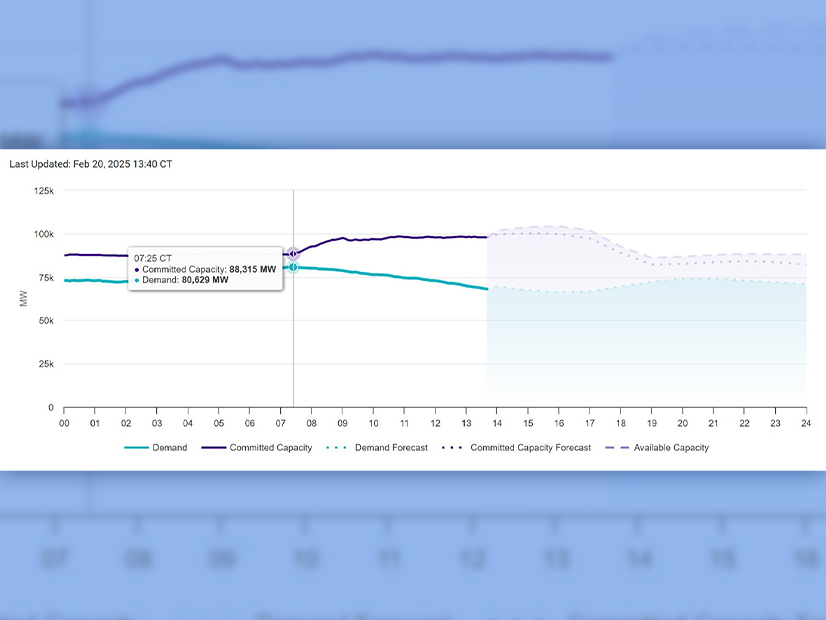ERCOT set a new winter demand peak Feb. 20 with its first-ever mark above 80 GW, a number once reserved for summer months.
Demand peaked at 80.63 GW at 7:25 a.m. Feb. 20 as a late-winter Arctic blast sent temperatures plunging below freezing in much of the state and as far south as Houston. ERCOT had projected demand to reach 83.7 GW but overshot the mark. The grid operator had a healthy margin of nearly 7 GW of operating reserves during the peak.
The new mark broke an instantaneous peak of 79 set at 11:25 a.m. Feb. 19. Demand averaged 78.72 GW during the hour interval ending at noon.
The peaks are not official until ERCOT completes the settlement process for the operating days. The current winter demand mark is 78.35 GW, set in January 2024. The grid operator set an all-time peak demand record of 85.46 GW in August 2023.
Renewable energy, particularly solar and batteries, has played a key role in meeting that demand. Renewables provided 35% of the need during the Feb. 19 peak, and energy storage set a record (4,587 MW) during the Feb. 20 record. Solar resources produced 22.92 GW of energy Feb. 20, second only to the record 24.31 GW set Feb. 16.
During a Feb. 18 press conference, ERCOT CEO Pablo Vegas said there was enough supply to meet demand. He pointed out that the ISO has added more than 13 GW of new supply since last winter.
“That supply is going to continue to be helpful in these cold events. A lot of it is solar and batteries, both of which are going to help us when the sun comes up on a cold day,” Vegas said. “The batteries help us as a bridge in the morning. That’s what helps us keep the reliability high as we get through this event.”
With the exception of five, 15-minute intervals that exceeded $1,000 in the Lower Colorado River Authority load zone, real-time prices have been relatively stable, briefly reaching a high of $457 Feb. 19-20.
ERCOT declared a weather watch Feb. 17 for Feb. 19-21 because of the forecast extreme cold weather, higher demand and potential for lower reserves. It expected grid conditions to be normal.
Temperatures in Houston, which is near the Gulf of Mexico, still have highs forecast in the 40s through Feb. 22, before the normal warmth returns.



